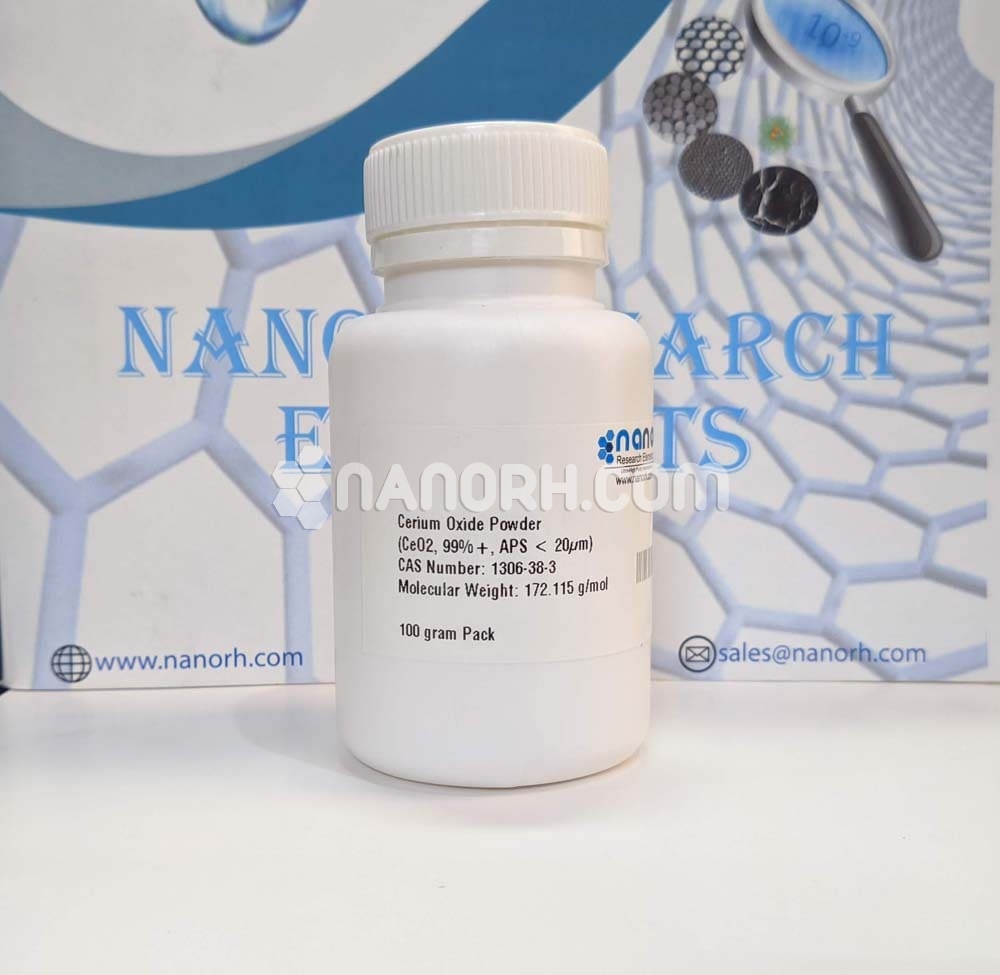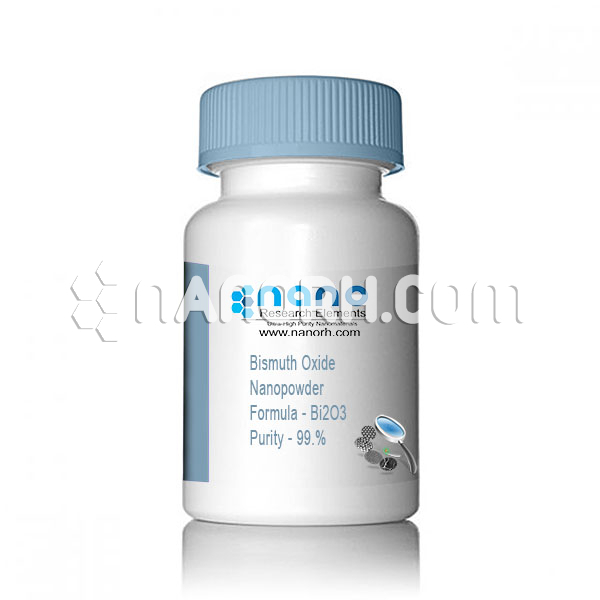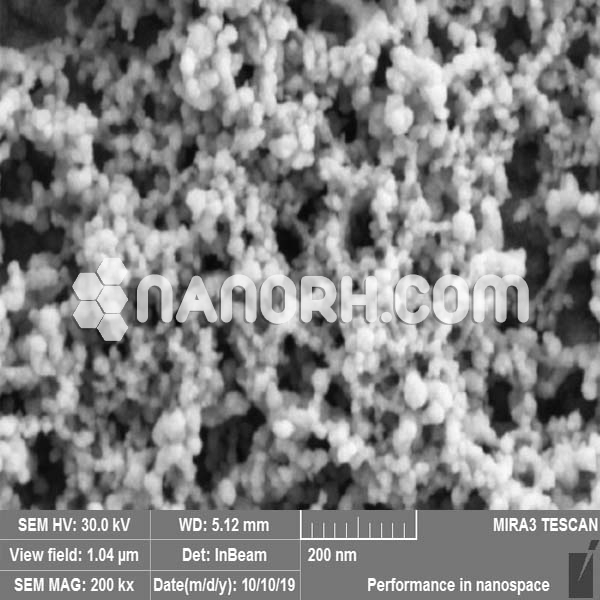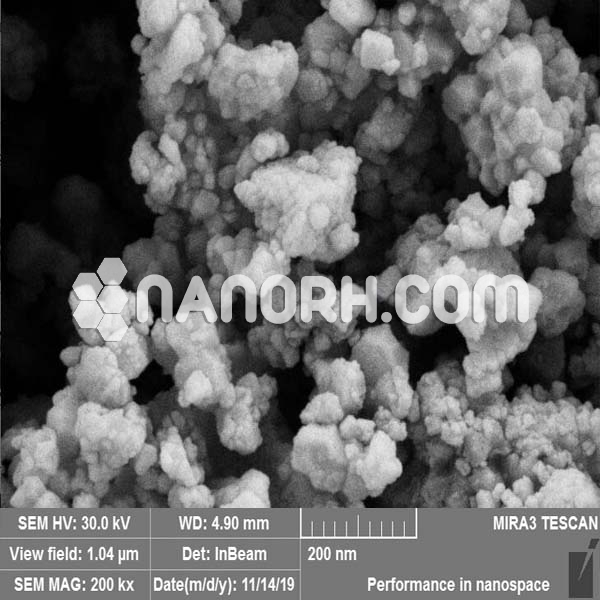| Cerium Oxide Nanoparticles | |
| Product No | NRE-3011 |
| CAS No. | 1306-38-3 |
| Formula | CeO2 |
| APS | <100nm (Can be Customized) |
| Purity | 99.9% |
| Color | light yellow |
| Molecular Weight | 172.115 g/mol |
| Density | 7.215 g/cm3 |
| Melting Point | 2400 °C |
| Boiling Point | 3500 °C |
Cerium Oxide Nanoparticles Application:
Cushion layer for superconductors; Catalysts and impetus bolster; Coatings for infrared channels; Coloring operators for plastics; Electrolyte and additionally anode materials for strong oxide energy components; Heat safe composite coatings; Infrared sponges; Oxidation safe coatings; Oxygen pumps; Oxygen sensors; Polishing media for electronic gadgets, glasses, and bearing balls; Sintering added substances; Ultraviolet retentive (ingestion at ~ 400 nm is the most grounded for any oxide)
Cerium oxide is the most abundant lanthanide metal oxide. It is widely used in oxygen sensors, catalytic converters and solid oxide fuel cells. The discovery of the redox-active nature (low redox potential) of cerium ions (Ce3+ and Ce4+) present at the surface of cerium oxide nanoparticles (CNPs) has opened up new avenues for biomedical applications, electrochemical bio-sensors, radiation protection, corrosion-resistant coatings, etc. Researchers have also demonstrated the unique regenerative antioxidant properties of CNPs through in vitro model systems; in particular, the ability of the CNPs to scavenge superoxide, hydrogen peroxide radicals, and reactive nitrogen species such as nitric oxide and peroxynitrite has been demonstrated. Dowding et al. have reported in a detailed study that CNPs inhibit the production of endogenous peroxynitrite and prevent Ab-induced mitochondrial fragmentation and neuronal cell death by neuronal internalization. This is followed by CNPs accumulation in the proximity of the mitochondrial and plasma membranes. The concentration of protein tyrosine nitration and reactive nitrogen species in neurons exposed to peroxynitrite decreases with an increase in the concentration of CNPs having a higher Ce4+ oxidation state, thus preventing mitochondrial dysfunction and neuronal cell death is suggestive of a potential treatment for neurodegeneration disease. Citrate/EDTA coated CNPs (size 3 nm) have also demonstrated their effectiveness in targeting affected brain tissues in an experimental autoimmune encephalomyelitis (EAE) induced rat model of multiple sclerosis by passing through the blood– brain barrier which results in the decrease of reactive oxygen species (ROS). The results of the in vivo study of ischemic shock (caused by ROS) induced rats treated with 3–4 nm phospholipid PEGylated CNPs show an increased concentration of CNPs in the brain as compared to liver and kidneys; thus revealing the therapeutic protection towards the ischemic brain tissue due to a mixed oxidation state (Ce3+ and Ce4+).




